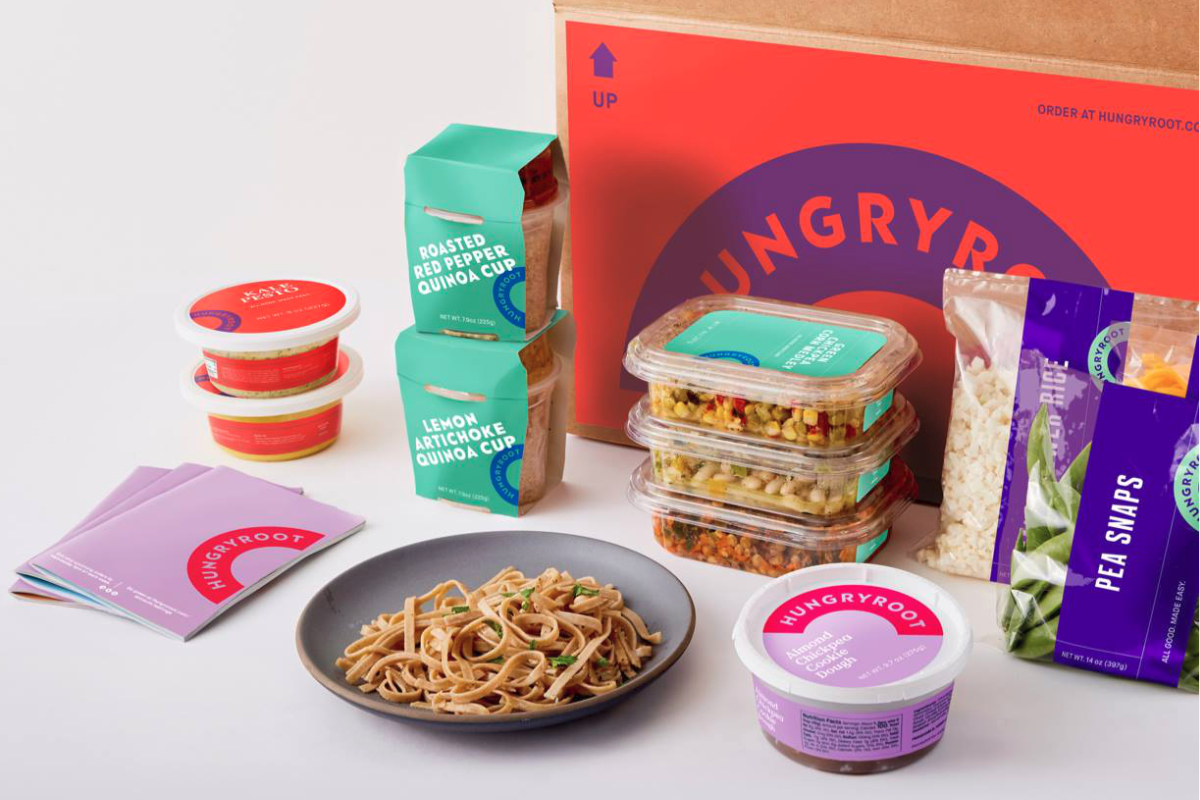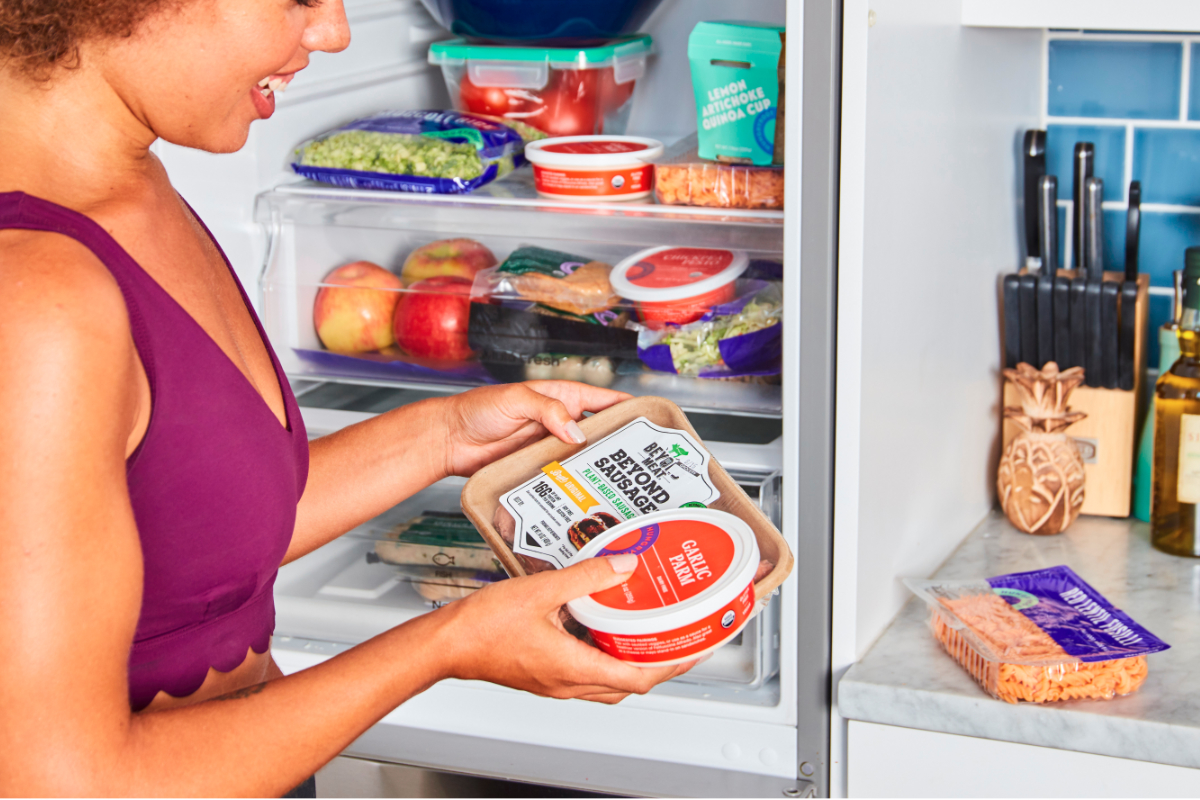NEW YORK — Lemongrass braised tofu, black bean brownie batter and beet pesto are among the products offered by Hungryroot, a New York-based personalized online grocery service that generated gross revenue of $30.5 million in 2018.
Ben McKean, founder and chief executive officer, described Hungryroot as a “different type of grocery store.” Subscribers receive weekly, customizable deliveries of mix-and-match meal components that are tailored to an individual’s profile and preferences. More than 100 product offerings include a variety of cut vegetables, proteins, sauces, grains and pasta, grab-and-go meals and snacks. Each shipment features recipe suggestions based on the items in the box.
“With Hungryroot, we get to know you so when you walk into our store, your cart’s full based on what we think you’re going to like,” Mr. McKean said. “You can still take items out and customize your box, but we’re doing the work for you.”
The business model bridges the gap between the “broken” in-store and online grocery experience with a focus on personalization, Mr. McKean said.
“As a result, we’re taking on Amazon Fresh, Whole Foods and other competitors to offer consumers a more convenient and modern way to shop for healthy groceries— no trip to the store, meal planning or prep work necessary, giving customers more time back in their day,” he said.
A plant-forward proposition
Until recently, Hungryroot developed all products available on the platform at hungryroot.com. Earlier in October, the company added several emerging food brands to its assortment, including RightRice, Beyond Meat, Banza, Freshé and Ozery Bakery. Additional brands will include Field Roast, Kite Hill, Hail Merry, Yves, Peckish, Angelic Bakehouse, Maya Kaimal and Maria and Ricardo’s.
 “Throughout the entire history of Hungryroot we’ve always been trying to get more products onto the platform,” Mr. McKean said. “We had six when we launched four years ago. We got it to about 60 earlier this year, everything Hungryroot branded … but we finally came to the realization that not everything has to be developed in-house. Why can’t we partner with other companies and that are aligned with us from a nutritional standpoint and a sustainability standpoint and offer their products on Hungryroot as well?”
“Throughout the entire history of Hungryroot we’ve always been trying to get more products onto the platform,” Mr. McKean said. “We had six when we launched four years ago. We got it to about 60 earlier this year, everything Hungryroot branded … but we finally came to the realization that not everything has to be developed in-house. Why can’t we partner with other companies and that are aligned with us from a nutritional standpoint and a sustainability standpoint and offer their products on Hungryroot as well?”
Hungryroot’s offerings are positioned as fresh and nutrient-dense with short, simple ingredient statements. A handful of items are shelf-stable; most require refrigeration. Cut vegetables include kohlrabi noodles, cauliflower rice and shaved Brussels sprouts. In addition to various plant-based protein options, including beans, lentils, chickpeas and tofu, Hungryroot offers smoked salmon, grilled chicken breast and chicken sausage.
“Our core premise is health is personal,” Mr. McKean said. “We don’t believe we should be saying healthy equals this amount of calories, sodium, fat, etc. We believe that customers are most in tune with their bodies and know which foods make them feel good. That being said, there are some nutritional studies that make it clear there are certain types of additives that should be avoided. We have a number of restrictions effectively that if a product includes certain additives, we don’t offer it.”
The direct-to-consumer advantage
Next year, Hungryroot plans to launch its products in traditional retail, Mr. McKean said. Initial items may include an almond chickpea cookie dough, black bean brownie batter and a selection of sauces. Among the brand’s most popular are plant-based garlic Parmesan, cashew cheddar and Thai peanut.
“When we think about Hungryroot and how it fits in the larger food industry, we believe that a direct-to-consumer relationship fundamentally allows you to innovate from a product perspective in ways you can’t if you only sell in traditional grocery,” he said. “Let’s take the cookie dough product, for example. There are three base ingredients: blended chickpeas, blended almond butter and chocolate chips, and if you think about just focusing on the  chocolate chips for example, the decision of how many chocolate chips to put in that product has huge implications for the appeal of the product from a nutritional perspective and from a sweetness perspective. You can guess, and you can do focus groups, but the best way to refine that product is to sell it and get direct customer feedback and tweak as you go. We’ve had that product about four years, and we’ve gone through multiple iterations of that product. It actually had a fourth core ingredient, which was roasted sweet potatoes, and we decided to remove that driven by customer insights.
chocolate chips for example, the decision of how many chocolate chips to put in that product has huge implications for the appeal of the product from a nutritional perspective and from a sweetness perspective. You can guess, and you can do focus groups, but the best way to refine that product is to sell it and get direct customer feedback and tweak as you go. We’ve had that product about four years, and we’ve gone through multiple iterations of that product. It actually had a fourth core ingredient, which was roasted sweet potatoes, and we decided to remove that driven by customer insights.
“We believe by selling direct-to-consumer we can get the products to be much better than if we simply launched in traditional grocery and scaled them up.”
The partner brands fill the gaps in the Hungryroot portfolio and were selected based on insights from a customer survey, Mr. McKean said. (The company declined to disclose the number of Hungryroot customers but indicated sales grew 800% last year and year-over-year retention increased by 33%). RightRice offers an alternative to conventional rice that features a blend of lentils, chickpeas, green peas and rice with no fillers, starches or gums. The product provides 10 grams of complete protein and 5 grams of fiber per serving, with nearly 40% fewer net carbs than white rice. Banza produces a range of pasta shapes, including cavatappi and shells, formulated with chickpeas. Freshé products include ready-to-eat canned tuna combined with vegetables and olive oil.
“The immediate goal of adding new brands is to improve the convenience of the service for our customers by offering more products,” Mr. McKean said. “You want a one-stop shop. That’s what we believe we’re building at Hungryroot — a direct-to-consumer platform, and if successful we can use all of those insights to help not just our products become better but other companies’ products to become better as well, and at the end of the day that should result in healthier food options for consumers. Not just online but also offline.”
